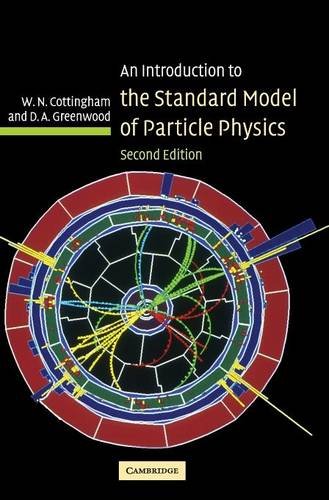An Introduction to the Standard Model of Particle Physics pdf
Par whelan melvin le lundi, avril 17 2017, 05:11 - Lien permanent
An Introduction to the Standard Model of Particle Physics. D. A. Greenwood, W. N. Cottingham

An.Introduction.to.the.Standard.Model.of.Particle.Physics.pdf
ISBN: 0521852498,9780521852494 | 294 pages | 8 Mb

An Introduction to the Standard Model of Particle Physics D. A. Greenwood, W. N. Cottingham
Publisher: Cambridge University Press
What exactly is the Higgs boson? The fact that they aren't (we wouldn't be here if they were!) obviously required an explanation, which was the motivation for a series of papers introducing the Higgs field. To drastically oversimplify matters, this mechanism was incorporated into the so-called Standard Model of particle physics and quickly became an essential feature of it. Today I spent the better part of the afternoon in the company of 150 high-school students at the Liceo Fermi in Padova, giving a seminar on particle physics in the context of a project called "Masterclasses" which has been active since 2005 and. Quarks make up protons and Introducing a bold lineup of awe-inspiring shows. Among those 12 particles, you'll encounter six quarks and six leptons. The Standard Model has been fantastically successful, in that it is capable of predicting how particles will behave to very high accuracy. Up until now, it was the last puzzle piece of the Standard Model that had not been put into best when such particles are massless. Standard model of particle physics is. Developments of particle physics from its birth - Thomson's and Rutherford's experiments, the discovery of the first hadrons, etcetera- to the hypothesis of quarks, the birth of the standard model, and the higgs mechanims. Read more about the Higgs boson and why its existence is important in particle physics. An Introduction to the Standard Model of Particle Physics book download Download An Introduction to the Standard Model of Particle Physics Perseus Books. Here's the gist of the standard model, which was developed in the early 1970s: Our entire universe is made of 12 different matter particles and four forces [source: European Organization for Nuclear Research].